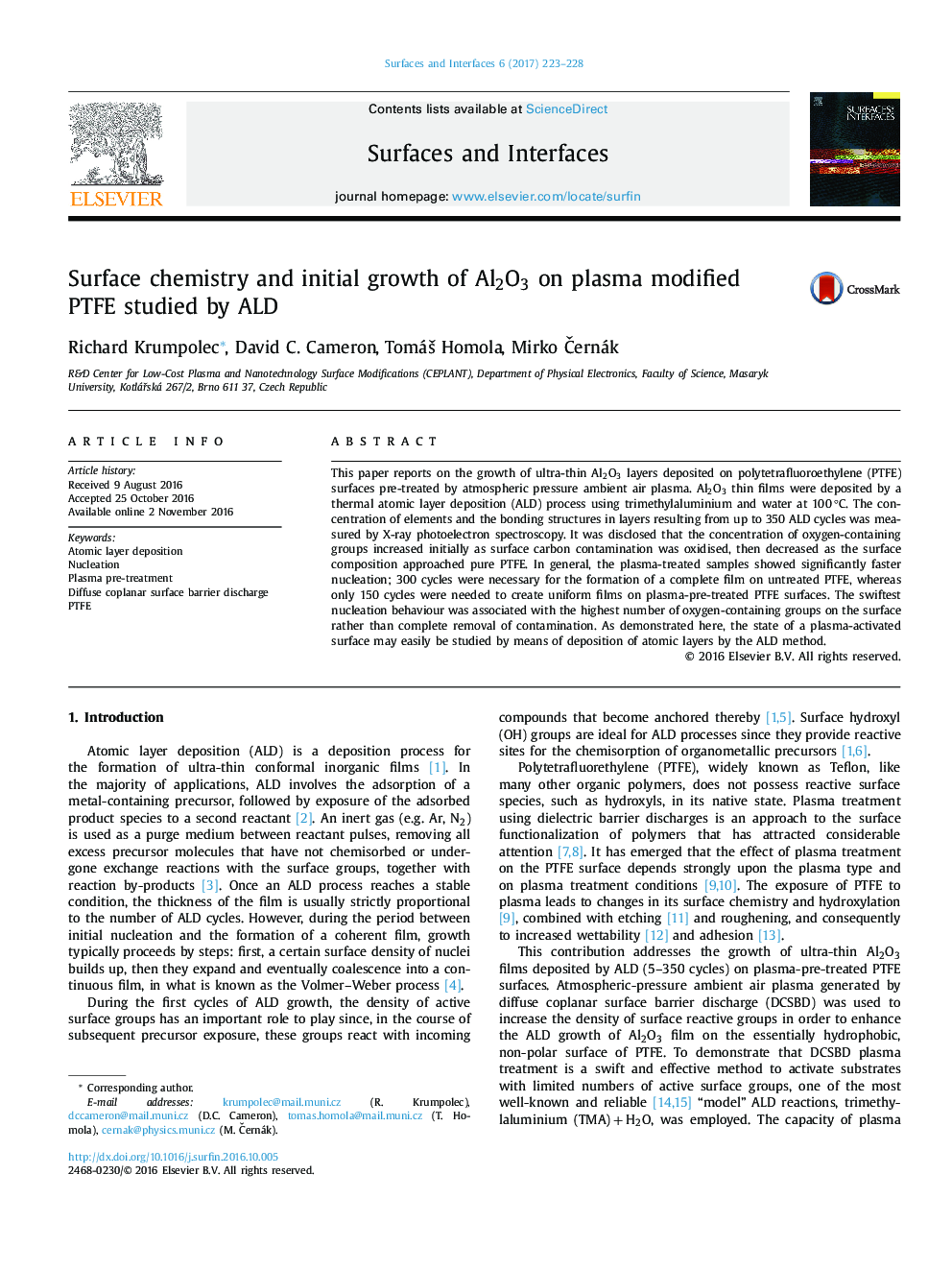| Article ID | Journal | Published Year | Pages | File Type |
|---|---|---|---|---|
| 4985609 | Surfaces and Interfaces | 2017 | 6 Pages |
â¢Ambient air plasma as an effective method to enhance the ALD nucleation process.â¢Initial growth of atomic layer deposited Al2O3 on PTFE was studied by XPS.â¢Plasma surface pre-treatment of PTFE showed significantly faster nucleation.â¢Nucleation behaviour correlated with the surface oxygen-containing groups induced by plasma.â¢ALD as a diagnostic tool to study of surface chemistry on plasma-modified polymers.
This paper reports on the growth of ultra-thin Al2O3 layers deposited on polytetrafluoroethylene (PTFE) surfaces pre-treated by atmospheric pressure ambient air plasma. Al2O3 thin films were deposited by a thermal atomic layer deposition (ALD) process using trimethylaluminium and water at 100 °C. The concentration of elements and the bonding structures in layers resulting from up to 350 ALD cycles was measured by X-ray photoelectron spectroscopy. It was disclosed that the concentration of oxygen-containing groups increased initially as surface carbon contamination was oxidised, then decreased as the surface composition approached pure PTFE. In general, the plasma-treated samples showed significantly faster nucleation; 300 cycles were necessary for the formation of a complete film on untreated PTFE, whereas only 150 cycles were needed to create uniform films on plasma-pre-treated PTFE surfaces. The swiftest nucleation behaviour was associated with the highest number of oxygen-containing groups on the surface rather than complete removal of contamination. As demonstrated here, the state of a plasma-activated surface may easily be studied by means of deposition of atomic layers by the ALD method.
